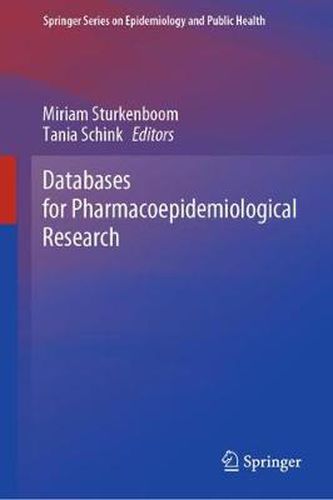Readings Newsletter
Become a Readings Member to make your shopping experience even easier.
Sign in or sign up for free!
You’re not far away from qualifying for FREE standard shipping within Australia
You’ve qualified for FREE standard shipping within Australia
The cart is loading…






This title is printed to order. This book may have been self-published. If so, we cannot guarantee the quality of the content. In the main most books will have gone through the editing process however some may not. We therefore suggest that you be aware of this before ordering this book. If in doubt check either the author or publisher’s details as we are unable to accept any returns unless they are faulty. Please contact us if you have any questions.
This book allows readers to gain an in-depth understanding of the role of real-world data in pharmacoepidemiology, and highlights the strengths and limitations of the respective databases with regard to pharmacoepidemiological research.
Over the past decade, the increasing use of real-world data in pharmacoepidemiological research has been accompanied by a growing recognition of the value of real-world evidence in clinical and regulatory decision-making. Electronic healthcare databases allow analyses of drug and vaccine utilization in routine care after approval, as well as investigations of their comparative effectiveness and safety. They are especially useful for the identification of rare risks and rare drug exposures over long periods of time, and as such sustainably extend the basis for drug safety research.
This book provides an introduction to the role of real-world data in pharmacoepidemiological research and the main developments in the last 15 years. It also offers a comprehensive overview of the general classification characteristics of databases, together with their strengths and limitations, and a detailed description of 21 individual databases, written by professionals who work with or maintain them.
$9.00 standard shipping within Australia
FREE standard shipping within Australia for orders over $100.00
Express & International shipping calculated at checkout
This title is printed to order. This book may have been self-published. If so, we cannot guarantee the quality of the content. In the main most books will have gone through the editing process however some may not. We therefore suggest that you be aware of this before ordering this book. If in doubt check either the author or publisher’s details as we are unable to accept any returns unless they are faulty. Please contact us if you have any questions.
This book allows readers to gain an in-depth understanding of the role of real-world data in pharmacoepidemiology, and highlights the strengths and limitations of the respective databases with regard to pharmacoepidemiological research.
Over the past decade, the increasing use of real-world data in pharmacoepidemiological research has been accompanied by a growing recognition of the value of real-world evidence in clinical and regulatory decision-making. Electronic healthcare databases allow analyses of drug and vaccine utilization in routine care after approval, as well as investigations of their comparative effectiveness and safety. They are especially useful for the identification of rare risks and rare drug exposures over long periods of time, and as such sustainably extend the basis for drug safety research.
This book provides an introduction to the role of real-world data in pharmacoepidemiological research and the main developments in the last 15 years. It also offers a comprehensive overview of the general classification characteristics of databases, together with their strengths and limitations, and a detailed description of 21 individual databases, written by professionals who work with or maintain them.